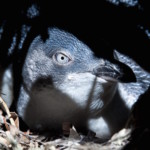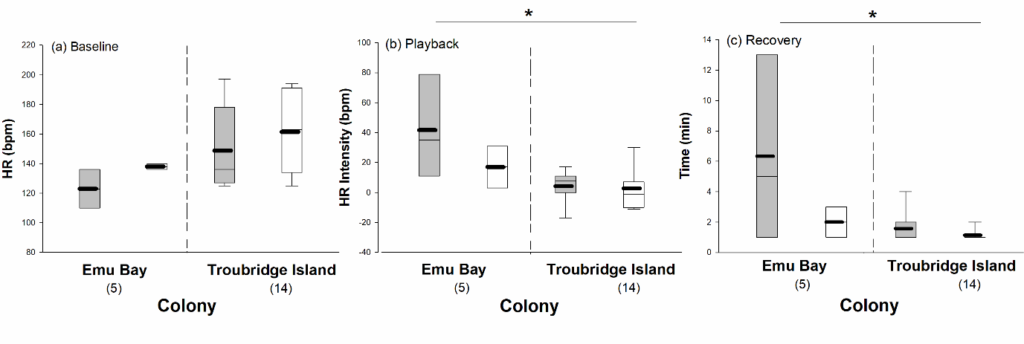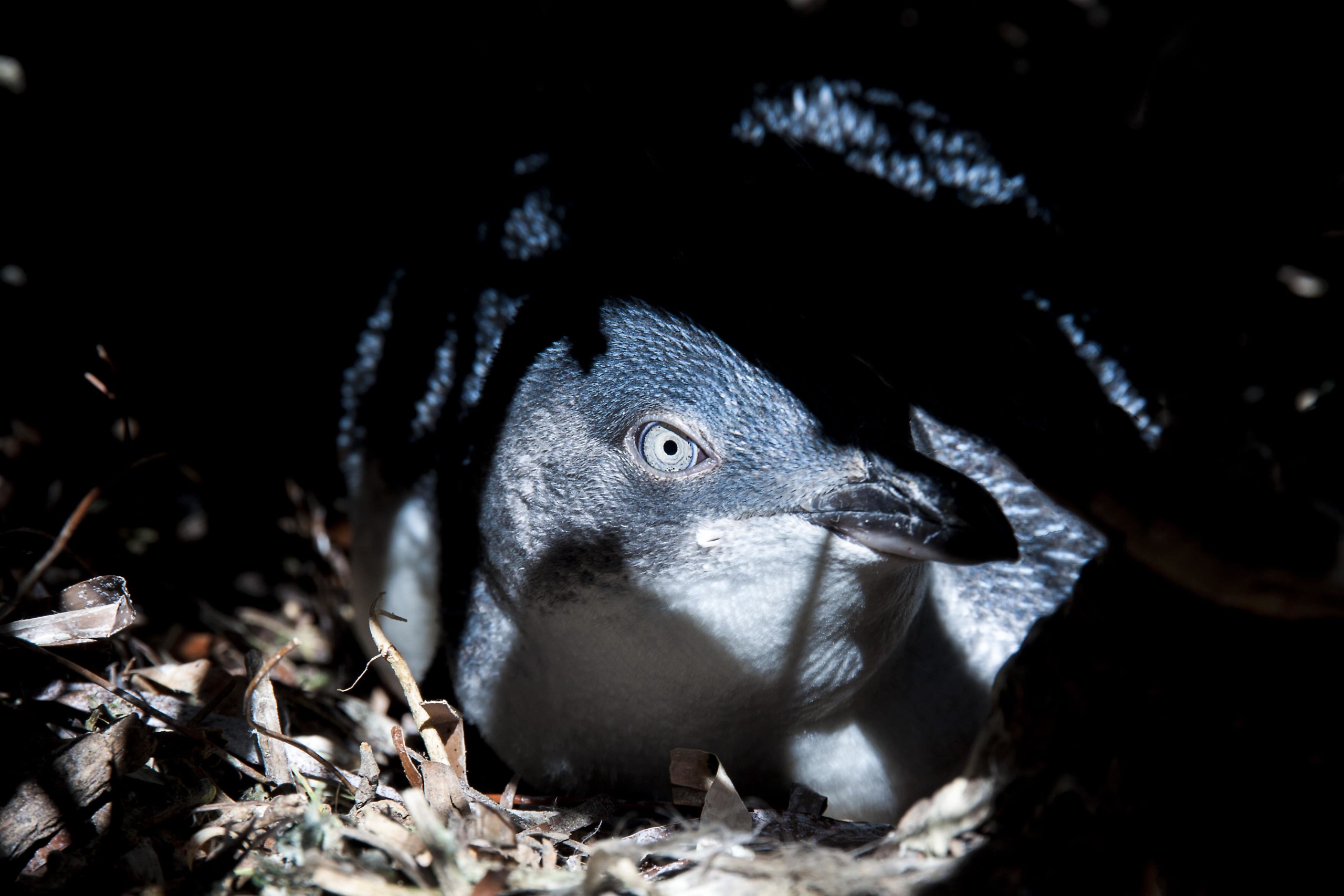LINKED PAPER
Behavioural and heart rate responses to stressors in two populations of Little Penguins that differ in levels of human disturbance and predation risk. Schaefer, R. & Colombelli-Négrel, D. 2021 IBIS. DOI: 10.1111/ibi.12925 VIEW
 Imagine yourself at home taking care of the kids. You are all alone and suddenly hear footsteps in your garden. Does your heart start racing? Maybe this is just someone walking past, and all will be fine. Or maybe you need to prepare to defend yourself and your kids. Now imagine that you are constantly exposed to noisy and drunken neighbours, invading your life and home all the time. With time you may get used to it. Or you may live in constant fear, sleeping with a knife under your pillow.
Imagine yourself at home taking care of the kids. You are all alone and suddenly hear footsteps in your garden. Does your heart start racing? Maybe this is just someone walking past, and all will be fine. Or maybe you need to prepare to defend yourself and your kids. Now imagine that you are constantly exposed to noisy and drunken neighbours, invading your life and home all the time. With time you may get used to it. Or you may live in constant fear, sleeping with a knife under your pillow.
Just like us, constant disturbance can have serious impacts on wildlife. In birds and mammals, regular exposure to uncontrolled human disturbance or non-lethal contacts with predators or individuals of the same species can lead to stress-related diseases, disrupt important behaviours, or lower reproductive success, which in turn can affect population trends.
The Little Penguin Eudyptula minor is an iconic seabird species whose population has significantly declined in the last 20 years in South Australia. Little Penguins have high socio-economic value and contribute to many local recreational opportunities. Yet, Little Penguins do not seem to habituate to constant human handling (Carroll et al. 2016) or the constant presence of human visitors (Sherwen et al. 2015).
The aim of this study was to compare how Little Penguins living in different environments differ in their response to stressors. We tested Little Penguins breeding at two South Australian colonies (Emu Bay and Troubridge Island). The colonies differed in habitat, conspecific density, levels of human disturbance and predation risk (high and low respectively). We used playback experiments of Cat and Little Penguin calls and recorded the behaviour and physiological (heart rate) response of adults in relation to each playback type (Cat, Penguin) as well as habitat characteristics (habitat type, nest type, nest visibility) and number of conspecifics present.
 Figure 1 Heart rate (HR) (bpm) and ‘Recovery following playback’ (min) of Little Penguins in response to playback of Cat (white boxes) and Little Penguin (grey boxes) calls at Emu Bay and on Troubridge Island (sample size is given in brackets): (a) Baseline HR during the pre-playback; (b) HR Intensity during the playback period (calculated as HR during playback-baseline HR); and (c) ‘Recovery following playback’ (total time taken by the individuals to return to baseline HR following playback).
Figure 1 Heart rate (HR) (bpm) and ‘Recovery following playback’ (min) of Little Penguins in response to playback of Cat (white boxes) and Little Penguin (grey boxes) calls at Emu Bay and on Troubridge Island (sample size is given in brackets): (a) Baseline HR during the pre-playback; (b) HR Intensity during the playback period (calculated as HR during playback-baseline HR); and (c) ‘Recovery following playback’ (total time taken by the individuals to return to baseline HR following playback).
We showed that individuals living in the colony with high disturbance (Emu Bay) exhibited higher vigilance and heart rate response to stressors than those living in the low-disturbance colony (Troubridge Island). Our results align with the general idea that constant, unpredictable and under-managed human disturbance and predation risk in birds can result in elevated behavioural and stress responses rather than habituation. Our study also supports the idea that management guidelines for penguins cannot be generalized and need to be species- and colony specific (Seddon & Ellenberg 2008).
References
Carroll, G., Turner, E., Dann, P. & Harcourt, R. 2016. Prior exposure to capture heightens the corticosterone and behavioural responses of Little Penguins (Eudyptula minor) to acute stress. Conservation Physiology 4: 1–11. VIEW
Seddon, P.J. & Ellenberg, U. 2008. Effects of human disturbance on penguins: the need for site-and species-specific visitor management guidelines. In Higham, J. & Lück, M. (eds) Marine Wildlife and Tourism Management: Insights from the Natural and Social Sciences: 163– 181. London: CAB International.
Sherwen, S.L., Magrath, M.J.L., Butler, K.L. & Hemsworth, P.H. 2015. Little Penguins, Eudyptula minor, show increased avoidance, aggression and vigilance in response to zoo visitors. Applied Animal Behaviour Science 168: 71–76. VIEW
Image credit
Top right: Little Penguin Eudyptula minor © Diane Colombelli-Négrel




